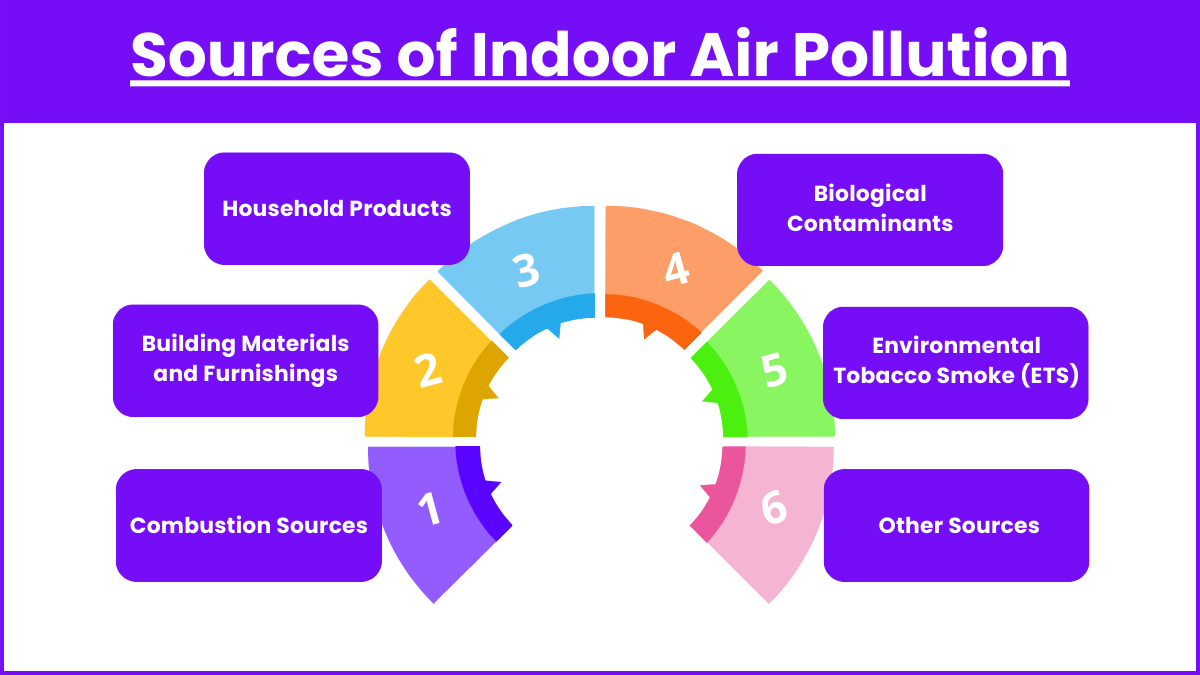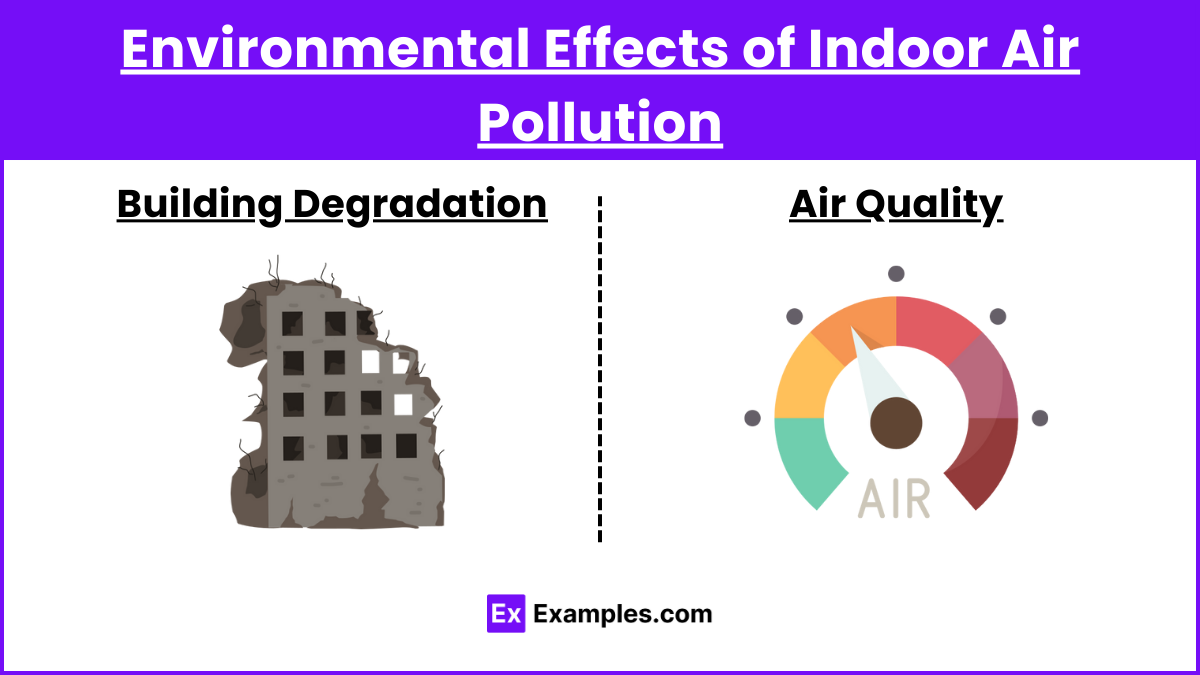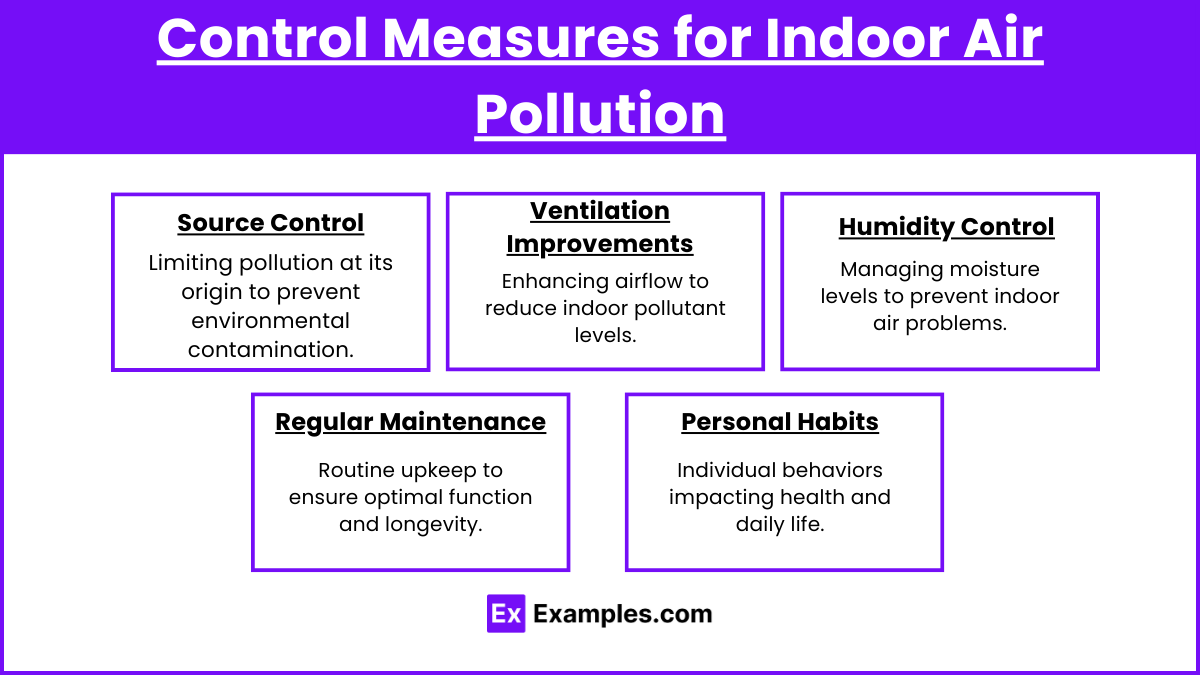Indoor air pollution, a key topic in AP Environmental Science, affects our ecology, ecosystem, and biodiversity by introducing harmful pollutants into the biosphere within enclosed spaces. Common sources include tobacco smoke, household products, and building materials, which can lead to significant health problems and environmental degradation. Understanding and mitigating indoor air pollution is crucial for protecting the delicate balance of our biosphere and maintaining healthy ecosystems and biodiversity.
Learning Objectives
By studying indoor air pollution, students will understand its impact on organisms, including human health and well-being. They will learn how pollutants contribute to climate changes and affect flora and fauna within indoor environments. Additionally, students will explore strategies to reduce indoor air pollution, such as improving ventilation, using non-toxic materials, and maintaining proper humidity levels. This knowledge is essential for protecting the health of living organisms and ensuring sustainable indoor environments amidst ongoing climate changes.
Sources of Indoor Air Pollution

Combustion Sources
- Tobacco Smoke: Releases nicotine, tar, and carbon monoxide.
- Wood and Coal Stoves: Emit particulate matter (PM), carbon monoxide (CO), and nitrogen oxides (NOₓ).
- Gas Heaters and Stoves: Produce carbon monoxide, nitrogen dioxide, and formaldehyde.
Building Materials and Furnishings
- Asbestos: Found in insulation, roofing, and tiles, can cause lung diseases.
- Formaldehyde: Emitted from pressed wood products, furniture, and textiles.
- Lead Paint: Can cause neurological damage, especially in children.
Household Products
- Cleaning Agents: Release volatile organic compounds (VOCs) and other chemicals.
- Pesticides: Contain toxic chemicals that can cause respiratory and neurological problems.
- Personal Care Products: Emit VOCs, including perfumes, deodorants, and hair sprays.
Biological Contaminants
- Mold and Mildew: Thrive in damp environments, releasing spores that can trigger allergies and asthma.
- Dust Mites: Found in bedding, carpets, and upholstered furniture, can cause allergic reactions.
- Pet Dander: Shed from the skin, fur, or feathers of pets, can cause respiratory issues.
Environmental Tobacco Smoke (ETS)
- A combination of mainstream smoke (exhaled by smokers) and sidestream smoke (from the burning end of a cigarette).
- Contains over 4,000 chemicals, many of which are carcinogenic or toxic.
Other Sources
- Radon: A naturally occurring radioactive gas that can seep into homes from the ground, causing lung cancer.
- Volatile Organic Compounds (VOCs): Emitted from paints, varnishes, and adhesives, can cause respiratory and neurological problems.
Health Effects of Indoor Air Pollution

Short-term Effects
- Irritation: Eyes, nose, and throat irritation.
- Headaches: Often caused by exposure to VOCs and CO.
- Dizziness and Fatigue: Common symptoms of exposure to carbon monoxide and other pollutants.
Long-term Effects
- Respiratory Diseases: Chronic bronchitis, asthma, and other lung diseases.
- Cardiovascular Diseases: Increased risk of heart disease and strokes.
- Cancer: Lung cancer from radon, asbestos, and environmental tobacco smoke.
- Neurological Disorders: Cognitive impairment and developmental issues in children due to lead and other toxins.
Environmental Effects of Indoor Air Pollution

Building Degradation
- Structural Damage: Mold and mildew can weaken building materials.
- Material Deterioration: VOCs and other chemicals can cause the breakdown of building materials and furnishings.
Air Quality
- Poor Indoor Air Quality: Affects the overall health and comfort of occupants.
- Outdoor Air Pollution: Some indoor pollutants can be released into the outdoor environment, contributing to broader air quality issues.
Control Measures for Indoor Air Pollution

Source Control
- Eliminate or Reduce Pollutants: Remove sources of pollution, such as tobacco smoke, and replace materials that emit VOCs.
- Use Alternative Products: Choose low-VOC or non-toxic household products and building materials.
Ventilation Improvements
- Increase Outdoor Air Ventilation: Use exhaust fans, open windows, and improve HVAC systems to bring in fresh air.
- Air Purifiers: Use devices with HEPA filters to remove particulates and pollutants from indoor air.
Humidity Control
- Dehumidifiers and Humidifiers: Maintain optimal indoor humidity levels (30-50%) to prevent mold growth and reduce dust mites.
- Fix Leaks: Repair any water leaks to prevent moisture buildup.
Regular Maintenance
- Clean HVAC Systems: Regularly clean and maintain heating, ventilation, and air conditioning systems.
- Regular Cleaning: Dust and vacuum frequently to reduce the buildup of pollutants.
Personal Habits
- No Smoking Indoors: Prohibit smoking inside buildings to reduce exposure to tobacco smoke.
- Proper Use of Products: Follow manufacturer instructions for household products to minimize emissions.
International and National Efforts
Guidelines and Standards
- World Health Organization (WHO): Provides guidelines for indoor air quality.
- Environmental Protection Agency (EPA): Sets standards and provides resources for improving indoor air quality in the United States.
Initiatives and Programs
- Indoor Air Quality Tools for Schools (EPA): Helps schools improve indoor air quality and reduce exposure to pollutants.
- Healthy Homes Initiative (HUD): Aims to reduce health hazards in homes, including indoor air pollution.


